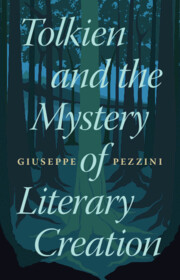Book contents
- Tolkien and the Mystery of Literary Creation
- Tolkien and the Mystery of Literary Creation
- Copyright page
- Dedication
- Contents
- Acknowledgements
- Note on the Text
- Abbreviations
- Introduction
- I The Cats of Queen Berúthiel
- II The Authors of the Red Book
- III The Lords of the West
- IV Beren and Frodo
- V Gandalf’s Fall and Return
- VI The Next Stage
- VII Epilogue
- Bibliography
- Index
IV - Beren and Frodo
Intratextual Parallels and the Universality of the Particular
Published online by Cambridge University Press: 17 April 2025
- Tolkien and the Mystery of Literary Creation
- Tolkien and the Mystery of Literary Creation
- Copyright page
- Dedication
- Contents
- Acknowledgements
- Note on the Text
- Abbreviations
- Introduction
- I The Cats of Queen Berúthiel
- II The Authors of the Red Book
- III The Lords of the West
- IV Beren and Frodo
- V Gandalf’s Fall and Return
- VI The Next Stage
- VII Epilogue
- Bibliography
- Index
Summary
Chapter IV discusses another important feature of Tolkien’s work, that is, the vast amount of narrative parallelism, both intra- and intertextual, focusing on some case studies (including the relation between the hero Beren and the hobbit Frodo in particular). These parallels are related to Tolkien’s belief in “the seamless web of story”, that is to say, to the view that there is only one single Tree of Tales, criss-crossing primary and secondary realities, which sprouts again and again with new branches and leaves, all different and yet all similar. This ‘organic’ image is helpful to understand key aspects of Tolkien’s literary ‘theory’, including his famous aversion to allegory, which is here related to his belief that literature embodies in new “modes” the same universal “motives” but in a way that is ‘unexpected’ and ‘unconscious’, and the conviction that all stories correlate with each other in a narrative chain having its centre in the Gospel Story.
Keywords
- Type
- Chapter
- Information
- Tolkien and the Mystery of Literary Creation , pp. 206 - 270Publisher: Cambridge University PressPrint publication year: 2025

